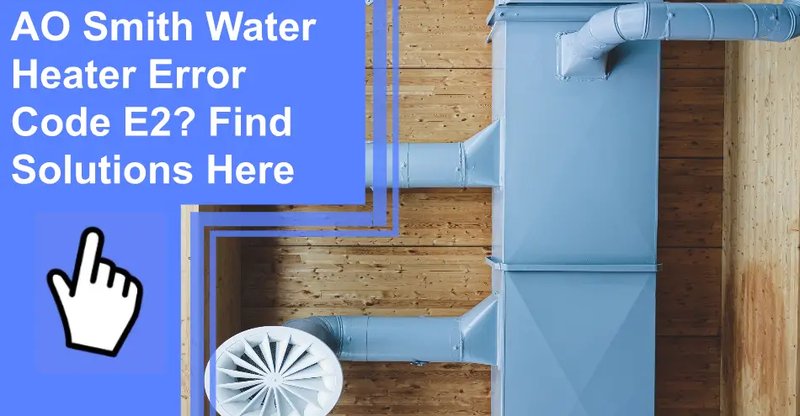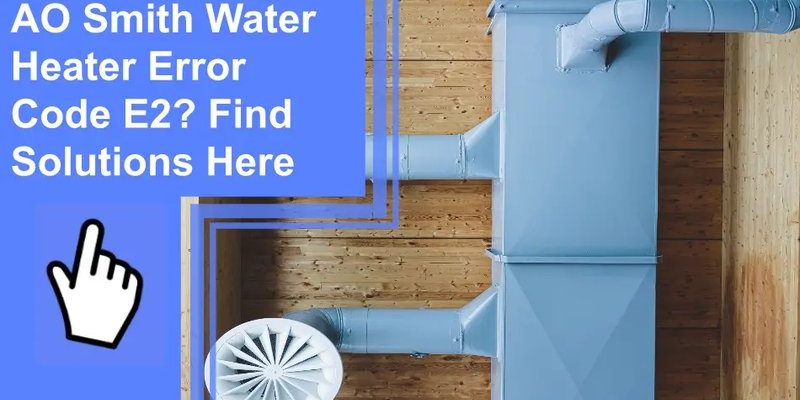
You might be wondering, “Why do these errors happen, and what can I do about them?” Well, just like any appliance, water heaters need regular care and attention. Ignoring them is akin to neglecting the oil changes in a car—eventually, things will go wrong. But don’t fret! With a little knowledge and some simple preventative measures, you can keep your water heater running smoothly, ensuring a consistent supply of hot water.
Understanding Error Code F2
So, what’s the deal with Error Code F2? In simple terms, it indicates that something is wrong with the flame sensor of your water heater. Think of the flame sensor as the gatekeeper of your heater’s safety. Its primary job is to ensure that a flame is present whenever the gas valve is open. If it doesn’t detect the flame due to soot or dirt, it shuts everything down to prevent gas from leaking—pretty important, right?
The flame sensor is a small, yet crucial component that’s usually positioned close to the burner. It works by sending an electrical signal when it detects heat. If the sensor is dirty or malfunctioning, the signal might not get through, causing the system to think there’s no flame when there is one. This confusion leads to a shutdown and, ultimately, the dreaded Error Code F2.
Understanding why the flame sensor malfunctions is key to preventing future errors. Often, dust, dirt, or corrosion can inhibit its ability to function correctly. Regular maintenance, such as cleaning, can go a long way in keeping the sensor in top shape.
Routine Maintenance: The Key to Prevention
Let’s dive into maintenance. Picture your water heater as an athlete. Just like athletes need regular training and recovery to perform at their best, your water heater requires routine check-ups. The most straightforward maintenance task is cleaning the flame sensor, which can be compared to brushing your teeth for cavity prevention.
Start by turning off the power and gas supply to ensure safety—just like putting a car in park before changing a tire. Once it’s safe, locate the flame sensor, typically found near the burners. Gently remove it, and use fine-grit sandpaper to clean the metal rod. This process removes the build-up that can affect its performance. After cleaning, carefully reattach it and restore the power and gas.
In addition to cleaning the sensor, consider scheduling an annual professional inspection. Technicians can provide a thorough check-up, much like a doctor’s visit, to catch potential problems early. It might feel like a hassle but trust me, it’s worth it in the long run.
Keeping the Surroundings Clean
You might not think about it, but the environment around your water heater plays a big role in its performance. If you’ve got a dusty basement or a cluttered utility room, this could be contributing to the F2 Error. Dust and debris can find their way into the system, affecting its components.
Consider this: if your heater is like a plant, it needs a clean space to thrive. Ensure the area around it is tidy and free of obstructions. Regularly vacuum or sweep to minimize dust accumulation. This small step can help keep those flame sensors clean and happy.
Additionally, check for any leaks around the heater, as moisture can lead to corrosion—a common culprit for flame sensor issues. Fixing leaks promptly not only prevents sensor damage but also helps in maintaining the efficiency of the heater.
Regular Checks and System Flushes
Beyond the flame sensor, another aspect of maintenance involves regularly checking and flushing the entire system. Think of this like flushing out the sediment in an aquarium—necessary for keeping the environment clean and healthy.
Sediment build-up within the tank can impact not only the flame sensor but also the overall functioning of the water heater. Over time, minerals from the water settle at the bottom of the tank, which can lead to inefficiencies and even damage.
To flush your system, turn off the water heater and attach a garden hose to the drain valve. Allow the water to flow out until it runs clear. Don’t forget to turn off the water supply first! Flushing once or twice a year can dramatically improve your heater’s lifespan and efficiency.
Preventing AO Smith Water Heater Error Code F2 might seem daunting at first, but with consistent maintenance and care, you can avoid those chilly surprises. Just like nurturing a relationship, your water heater responds positively to attention and effort. Regular cleaning of the flame sensor, maintaining a tidy environment, and scheduling professional inspections are your go-to strategies.
Remember, a little preventative care goes a long way in ensuring a warm and comfortable shower every morning. By following these steps, not only do you keep error codes at bay, but you also extend the life of your heater, saving you money and hassle down the line. So, take these steps to heart, and enjoy the peace of mind that comes with a reliably hot shower.
